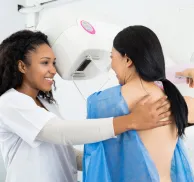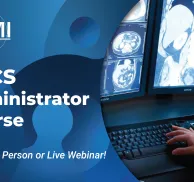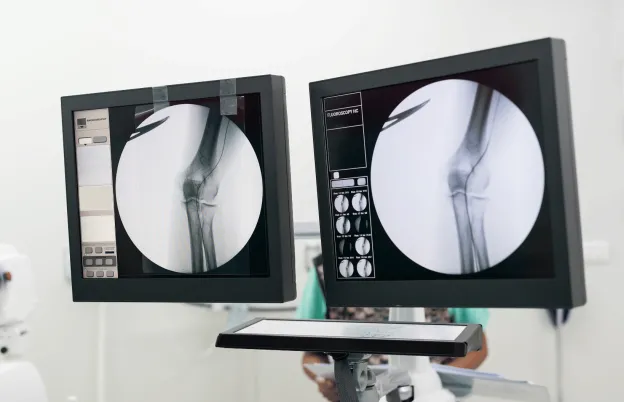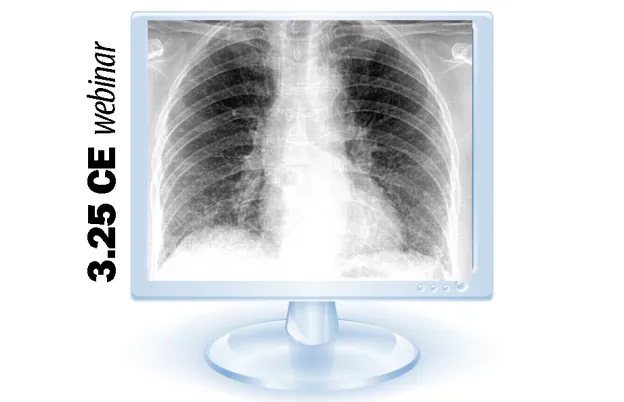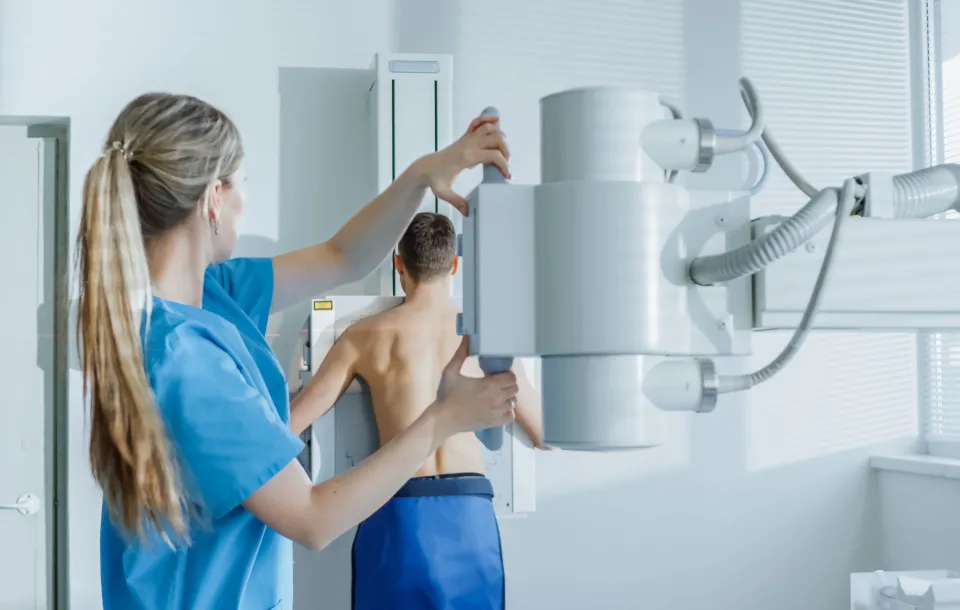
Techniques for Optimizing Chest Radiography
About this Program
Chest radiography still represents the largest, single-most ordered radiography examination by practitioners even with all of the choices available from the various medical imaging modalities. The simple chest radiograph delivers a high diagnostic yield of information, particularly when you consider its low cost and radiation dose, exam logistics and convenience.
In this session, we’ll look at the basic interpretive techniques used by radiologists to understand the information seen on a chest image. Concepts such as silhouette sign, hilar overlay sign, cardiac curves, and chest consolidations will be explored. The important role of the technologist will be emphasized to achieve optimum diagnostic yield.
Educational Objectives
After this webinar, you will be able to:
- Explain the radiologic interpretive principle based on the five (5) radiographic densities
- Differentiate between the left and right hemi-diaphragm on a lateral chest radiograph, using the principle of five (5) radiographic densities
- Recognize abnormal chest radiographs using the silhouette sign concept
- Identify the general location of a chest consolidation using the silhouette sign and hilar overlay techniques
- Distinguish between the four (4) classes of radiographic chest consolidations
- Diagram the pulmonary acinus unit to explain the process of fluid collection and aeration in lung tissues
- Distinguish between the various patterns of lung consolidation
- Calculate the cardio-thoracic ratio as shown radiographically
- Recognize cardiomegaly on a chest radiograph
- Label the left and right cardiac curves as seen radiographically
- Identify various interpretive anatomical structures commonly seen on a chest radiograph
- Explain the important role the radiographer plays in optimizing chest image value and the consequences of sub-optimum image quality
Schedule
In-person and live webinar options
- Tenets of Image Interpretation
- Five (5) Radiographic Densities and Image Production
- Silhouette Sign (SS)
- Principle of Interpretation and History of SS
- SS and localization of pathologies
- Hilar overlay sign
- Spine sign
- Distinguishing between lt. and rt. Hemidiaphragms
- Wwallowed objects on chest radiograph
- Role of temporal resolution
- Classes of Chest Consolidations
- Tumor
- Benign vs. malignant
- Role of CT and MR
- Role of digital tomosynthesis
- Chest fluids
- Congestive conditions and fluid
- Kerley lines
- Peribronchial cuffing
- Atelectasis
- Causes
- Radiographic signs (direct and indirect)
- Pneumonia
- Types of pneumonia
- Air bronchogram
- Pulmonary acinus unit and its structure for infiltration
- Air bronch0gram patterns
- Pneumothorax
- Causes
- Visualization and importance of patient position
- Tumor
- Cardio-thoracic Ratio and Chest Analysis
- Calculation
- Cardiomegaly and typical causes
- Importance of patient positioning and inspiration
- Anterior clear space
- Retrocardiac clear space
- Heart Curves
- Left heart curves
- Right heart curves
- Heart curve accentuation and possible causes
- Chest Lines, Stripes and Anatomical Considerations
- Paratracheal stripes (left and right)
- Hilar overlay sign
- Used as an interpretive tool
- Mediastinal width
- Chest Interpretation Strategies
- Alignment
- Symmetry of Aeration/Volume Loss
- Consolidation
- Hyperlucency
- Cardiac silhouette
- Vascular markings and bony structures
- Bronchial markings
- Masses and mass effect
- Chest Neoplasms
- Radiographic features
- Role of CT and radiography
Audience
Who should attend?
Radiologic Technologists
Program Faculty
Meet your presenter(s)

Randy Griswold
MPA, RT(R)
Randy has been in the medical imaging profession for over 40 years as an educator, sales and marketing professional and consultant. Currently he is a contributing author and medical imaging consultant. Prior to that, he was the Director of Sales and Marketing for a Midwest distributor of digital medical imaging products. His collective experiences as an educator include being the Program Director for Bellin College, School of Radiologic Sciences and their BSRS program. He was instrumental in transforming their two-year certificate program to a four-year, accredited BSRS degree program.
Randy has 23 years of experience in radiology capital equipment sales, service and support including digital imaging, and has completed his graduate work in Public Service Administration with an emphasis in Health Care Administration and Medical Imaging Marketing. He is a past president of the Wisconsin Association of Educators in Radiologic Technology (WAERT) and the Wisconsin Society of Radiologic Technologists (WSRT) as well as being a Fellow. His passion for teaching is focused on helping technologists understand the importance of obtaining good quality images for diagnosis, in a fashion that uses the skills and techniques of radiologist interpretation.
Credits
Accredited training programs

ASRT Category A
This program provides 2.75 hour(s) of Category A continuing education credit for radiologic technologists approved by ASRT and recognized by the ARRT and various licensure states. Category A credit is also recognized for CE credit in Canada. You must attend the entire program to receive your certificate of completion.
Tuition
Convenient payment options available
| Audience | Price | Early Price | Member Price | Member Early Price |
|---|---|---|---|---|
| Technologist | $69.00 | $65.00 | $62.00 | $59.00 |
Early Pricing Guidelines
Qualifying 'Early' registrations must be made at least 4 days in advance for the program.
Cancellation Policy
Webinars less than 8 hours of credit
Refunds, minus a $15 processing fee, will be granted for cancellations received at least 3 days prior to the program. Cancellations received within 3 days of the webinar will receive a credit toward a future MTMI program, minus the $15 processing fee. No refunds will be made after the webinar starts. MTMI reserves the right to cancel any scheduled program because of low advance registration or other reasons. MTMI’s liability is limited to a refund of any program tuition paid. WEBINAR ATTENDEES that cannot log in due to unsolvable technical issues beyond their control will be eligible for a full refund.
